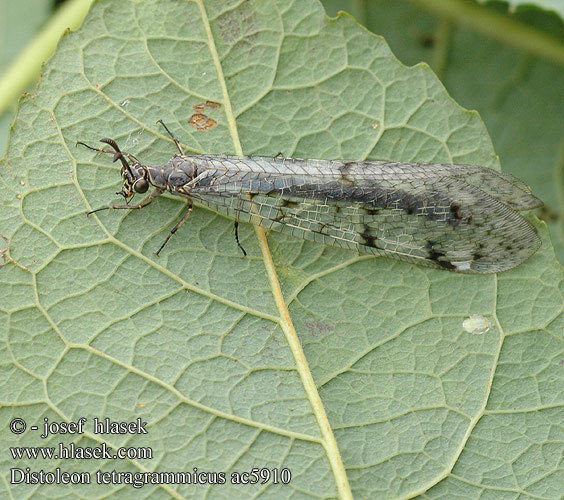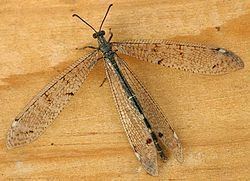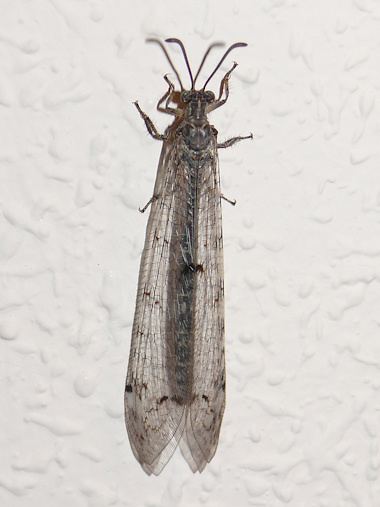Superfamily Myrmeleontoidea Rank Species | Suborder Myrmeleontiformia Family Myrmeleontidae Higher classification Distoleon | |
 | ||
Similar Distoleon, Antlion, Neuroptera, Insect, Macronemurus appendiculatus | ||
Antlion video adult giant speckled distoleon tetragrammicus
Distoleon tetragrammicus is a species of antlion in the subfamily Myrmeleontinae.
Contents
- Antlion video adult giant speckled distoleon tetragrammicus
- Distribution
- Habitat
- Description
- Biology
- References
Distribution

Distoleon tetragrammicus is widespread in the western Palaearctic ecozone and it is present in most of Southern Europe and in North Africa.
Habitat

This species can be found in a wide range of habitats, from coastal dunes to mountain forests, mainly in arid and sandy areas, in oak and pine forests and in various calcareous wasteland with minimum moisture. The larvae avoid exposed sites as coastal dunes.
Description

The adults of Distoleon tetragrammicus greatly resemble dragonflies or damselflies. They have a wingspan of about 75 millimetres (3.0 in). The front wing can reach a width of 26–40 millimetres (1.0–1.6 in). They have thick, prominent, apically clubbed antennae, a long, narrow abdomen and two pairs of long, transparent, multiveined wings, with some brown and opaque spots. This species is sometimes confused with Myrmeleon formicarius.

The larvae do not look anything like adults. The length of a fully grown larva is typically 12–22 millimetres (0.47–0.87 in). The basic body color is dark brown with darker markings. The head is dark brown. The strong dark brown mandibles do not show long bristles outside the margins. Pronotum is covered by large black setae and short bristles. The dorsal side of abdomen has a series of circular markings and a characteristic dorsal median stripe. Mesothoracic and abdominal spiracles are brown. Legs may be yellowish or whitish.
Biology

The adults of Distoleon tetragrammicus appear in the middle of the summer and fly from June to August. They are attracted to light. The life cycle begins with oviposition of the female into the sand. Larvae of this species don't build craters or pit traps. They live buried in dry ground and may be errant. They are voracious predators, feding on small insects and other small arthropods that they catch with their powerful jaws. After one year larva retreats into a cocoon and make the metamorphosis into adult.
